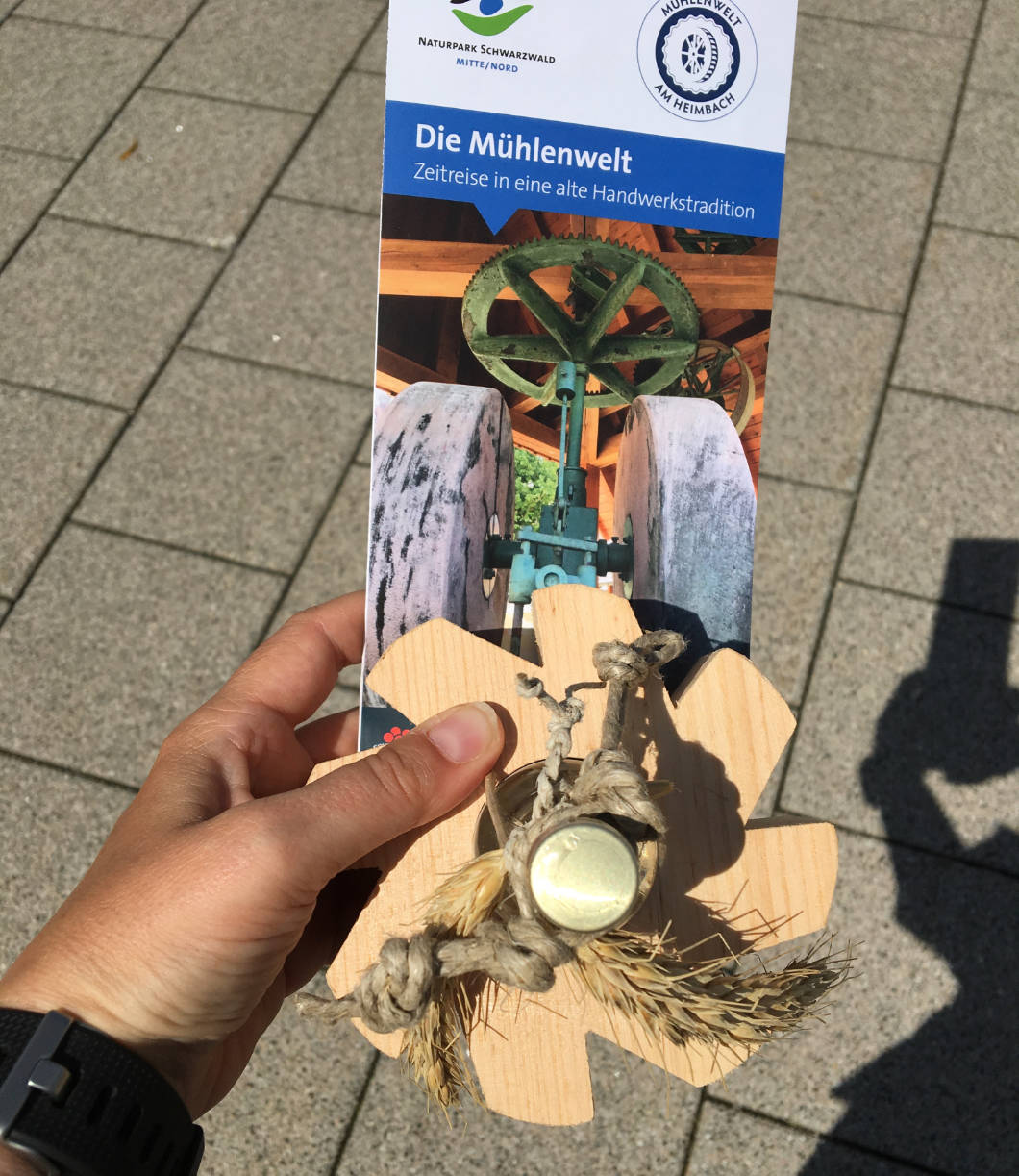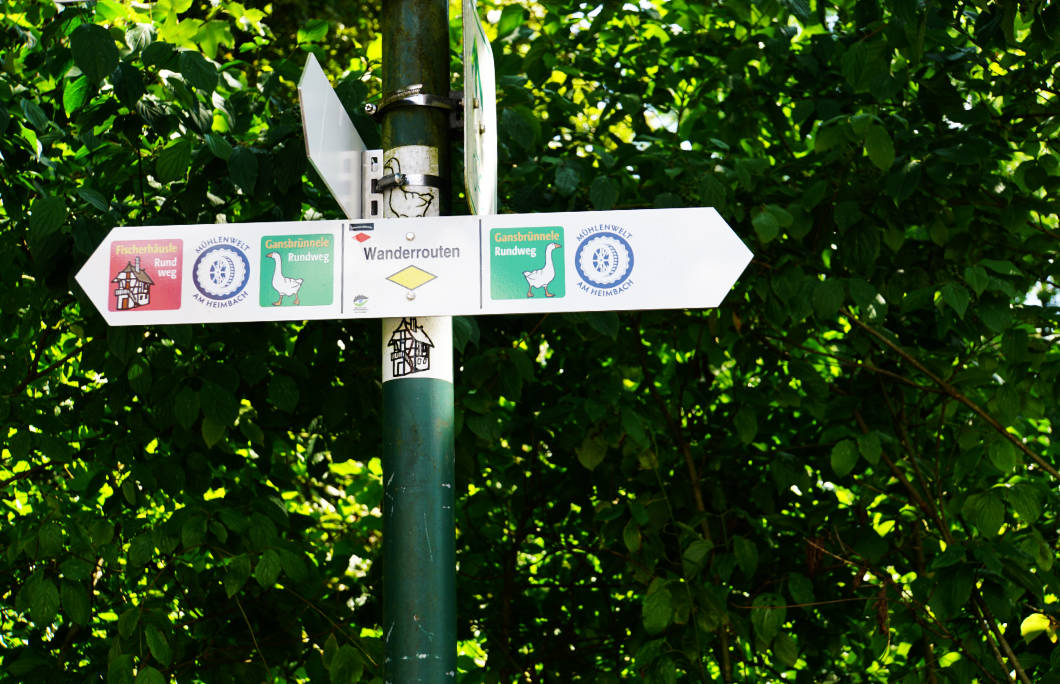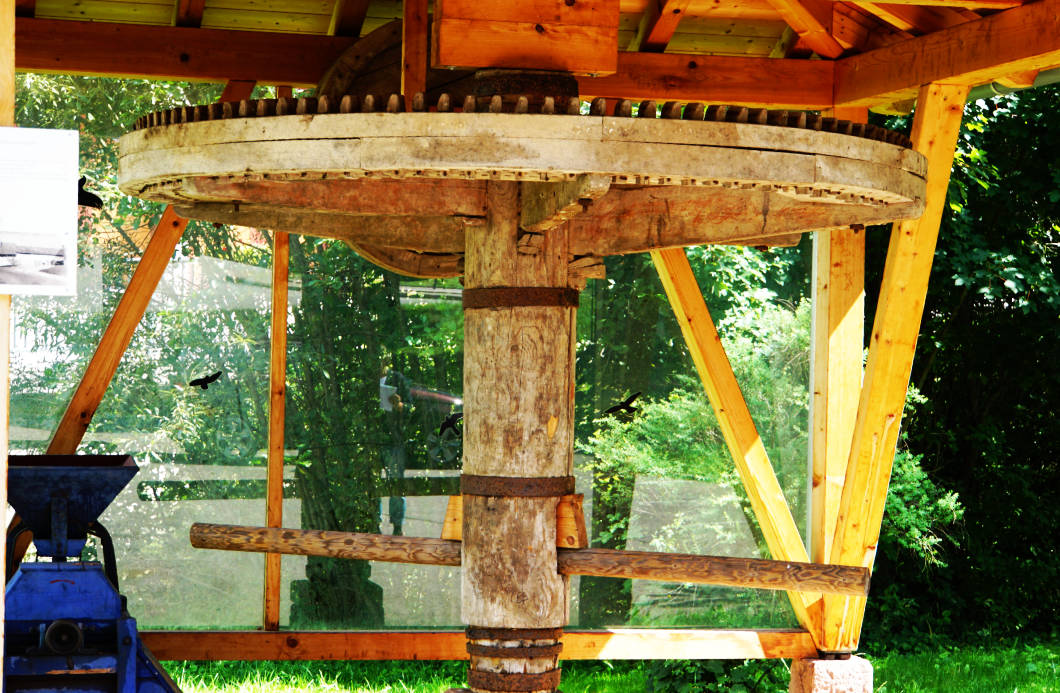In bright sunshine, we drove with an information flyer from Lossburg to the starting point for a hike through the world of mills on the Heimbach.
A possible starting point is the car park in front of the Heimbachhalle in Betzweiler. There are usually good parking facilities here. But beware! On Wednesdays there is a market here from 1 p.m. and part of the car park is then blocked off for the market stalls. We were there on a Wednesday before the market opened and had a bite to eat at the market after the walk.

Start of the hike
Our start was a bit bumpy. At the car park we discovered a sign and, as we hadn’t looked at the flyer, we first walked in the wrong direction until we noticed that there were no more signs. It can happen, so we returned to the car park, set everything to restart and set off again in the direction of the town. Our resolution was to always look at the flyer and follow the path.

Let us note in advance, in some places we really had to take the flyer to help us, as we were not sure whether we were still on the right path. There are many signs, but we often seem to have talked too much and looked too little.

Hiking trail Mühlenwelt am Heimbach
The first stop on the hike is the Heimbachmühle. A sign tells us that a mill has stood here since the middle of the 13th century. The mill was operated only by water power and was used by farmers in the region to grind their grain. In 1952, the operator of the mill ceased operations.

The hike passes a total of 13 stations. There is an information board at each station. For children, Emil the donkey explains in a child-friendly way what is being depicted at this station. A second explanatory board provides the “adult-friendly” specialist knowledge. This has helped me a few times, for example, I didn’t know what a Göpel was.

The device itself, which we discovered at a station, I had seen before, but the name was completely unknown to me. A Göpel is a power machine, but the house in which it stands also has the same name. The Göpel shown here was driven by oxen running in a circle, which set a shaft in motion that then drove a machine. This machine was used, for example, for a beet-cutting machine.

Before we went through the forest to Busenweiler, we passed a water wheel. Even the ancient Romans used water wheels to drive grinding mills. The technology used at that time has hardly changed until today. In the villages, water power was used to generate energy that supplied the farms.
During our walk along the world of mills on the Heimbach, we made a few small discoveries that are not directly related to the theme, but are simply beautiful. For example, a little sleepwalker was lying on a roof ridge and I discovered a beautiful milk jug in a door.


In Busenweiler we also walked past an oil mill. When the owner of the oil mill moved from Dornhan to Busenweiler in 1833, he brought his mill with him. Until 1960, oil was pressed here using hydraulic pumps. It’s a pity that today you can only visit these mills from the outside. I would have loved to see such a mill from the inside and, above all, in working order.

From Busenweiler, the Mühlenwelt hiking trail led us along the Heimbach through nature on the other side of the valley back to Betzweiler. Throughout the hike we learned a lot about the Mühlenwelt and had a really wonderful hike in the Black Forest. If you would like to follow our path, you can take a closer look at the map and perhaps follow in the footsteps of the mills during a visit to the Black Forest.
The hiking trail is barrier-free and is also well suited for children.
Disclosure: The hike “Mühlenwelt am Heimbach” was an item on the programme of our blogger trip to the Black Forest. The report corresponds to our own experiences and was written independently of the trip.


Leave a Reply